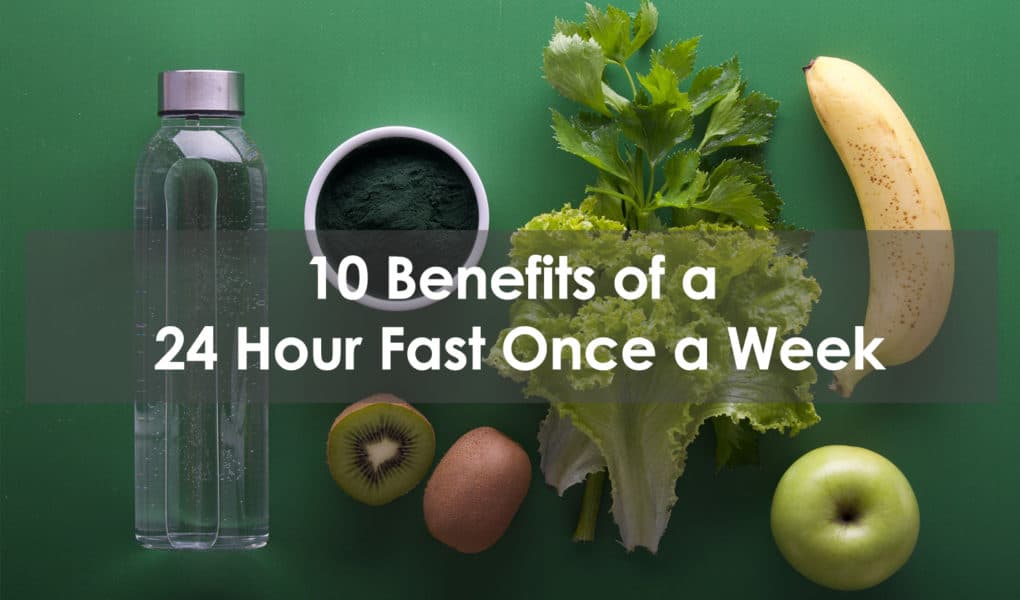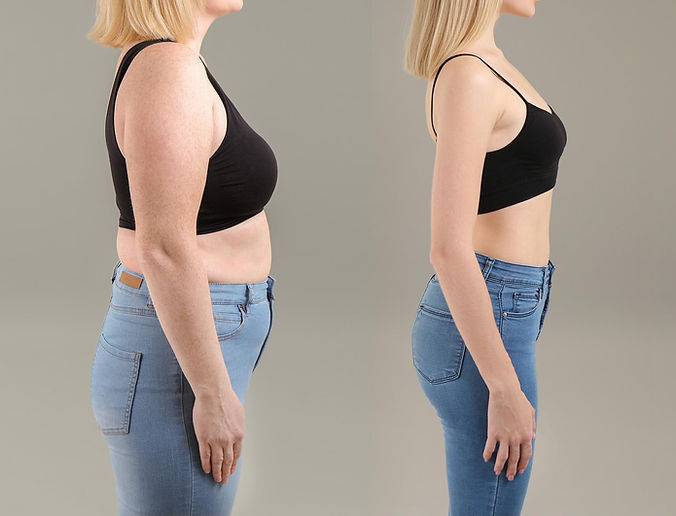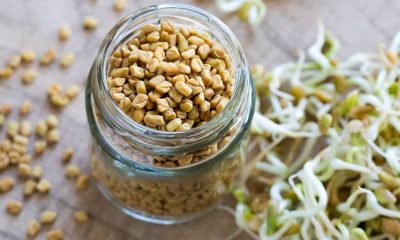Health
Benefits of fasting for 24 hours

Discover the benefits of fasting for 24 hours.
24-hour intermittent fasting is often recommended for weight loss, but also its many health benefits.
In this article, I detail the benefits of intermittent fasting, and particularly its practice over 24 hours. You will also be able to find my testimonial and my advice for a successful 24-hour intermittent fasting.
24hr Intermittent fasting to live longer in good health!
This sentence comes up constantly when one is interested in the subject. Simple fashion effect or real health interest? That’s the real question.
The objective of this practice is based on calorie restriction and resting the digestive system as a whole.
When we eat too much, binge, and get too much protein, our aging process is accelerated. Our body ages faster. To counter this effect, it is, therefore, necessary to fast. You boost your production of growth hormone, a hormone of youth.
In practice, it remains very complicated. It was Dr. Valter Longo who simplified the practice of intermittent fasting to reap all the health benefits. But in reality, is it effective?
The benefits of 24 hours intermittent fasting
Many scientific studies have highlighted the following health benefits of intermittent fasting:
• Promote weight loss, maintenance, lower bad cholesterol and increase well.
• Reduce cardiovascular and cancer risks.
• Regulate blood sugar by lowering insulin production and increasing fat metabolism.
• Lower the markers of inflammation ( responsible for the aging process ).
• Stimulate growth hormone production ( 2000% during 24-hour intermittent fasting ). This molecule helps you fight to age, tap into your fat and increase your muscle mass.
• Regulate hormonal disturbances after meals.
• Diversify the composition of the intestinal flora.
• Improve the quality of sleep.
It should be noted that these benefits are mainly found in a population that is overweight or obese, sedentary, or suffering from metabolic disease. The effects of intermittent fasting in healthy, physically active, or athletic people seem small to non-existent.
Intermittent fasting and weight loss
According to scientific research, intermittent fasting is effective for weight loss.
The main reason for the effectiveness of intermittent fasting on weight loss is calorie restriction.
Indeed, skipping one or more meals considerably reduces your food consumption. You then find yourself in an energy deficit, and your body has no choice but to draw on the stock of glycogen and fats to continue to function.
Practiced 1 to 2 times a week, over 3 to 24 weeks, intermittent fasting can lead to a weight loss of 3 to 8% of the initial weight, with a non-negligible share of abdominal fat (reduction in the circumference of cut).
However, over the long term, the evidence on the effectiveness of intermittent fasting remains very weak. We don’t know if, as with all low-calorie diets, it leads to a Yoyo effect and significant regain of lost pounds.
To lose weight permanently, mainly fat, while maintaining your muscle mass, it is advisable to combine a slight caloric restriction and the practice of sport regularly.
Need to lose weight permanently?
My Sport to lose weight program has already enabled hundreds of people to lose weight, improve their health and be in better shape! It includes sports sessions in videos, tools to calculate your fat loss, tips for starting running, recipes, and much more… It’s never too late to start the sport and lose weight for your health.
Opinion on the intermittent fasting 24h
So I wanted to get to the bottom of it and test this practice. To simplify things, Dr. Longo has been testing different protocols for several years. Simpler protocols to apply daily while maintaining the benefits. For people with a healthy lifestyle, practicing 24 hours a month is very effective.
So I fasted for 24 hours. The easiest way is to start after dinner. You eat dinner normally, then nothing until dinner the next day. Hydrate well. You can also consume tea, coffee, infusions but without sugar.
I was afraid of being too hungry, of being a wreck unable to move. And not at all. I did my intermittent fast one day back from vacation, in the car. I felt good, without a stroke. What a pleasure to sit down to eat in the evening, even if the goal is to eat normally and no more than usual.
I resumed the sport the next day with a big day ( 3h30 of cycling chained to 1h of jogging ). I felt good, I didn’t have any cravings. I even recovered better. I am full faster on the meals that follow. The results are very positive.
However, here are some tips to guide you:
• No sport on the day of intermittent fasting, or a short cardio session (30 minutes).
• Take care. Get out of your house, otherwise, the day will be too long to manage unless you have plenty of tasks to accomplish.
• Don’t throw yourself on the food when you eat again. Don’t say to yourself: “it’s good, I’ve done the hardest I can let go”.
• Remember to drink well ( 1.5 to 2 liters of water ) and take hot drinks for satiety.
Be careful if you have medical treatment, do not do it. I do not know the actions of this practice under these conditions. A drug does not have the same effect in these conditions, so check with your doctor.
I await your reactions after your tests. Intermittent fasting is increasingly practiced in the United States, to fight against junk food and diseases of civilization. Its health benefits are undeniable. Live old and above all live better!
Health
13 Benefits of sorrel and side effects

Table of Contents
Health
10 Benefits of long bell peppers

Discover the 10 health benefits of long bell peppers.
The long peppers may sound unfamiliar to some, but not in the ears of the Javanese. In Java, it is also known as Javanese pepper, with the scientific name of Piper Retrofractum Vahl.
It is considered as a spice and is commonly used for jamu, which is an Indonesian traditional herbal drink, hence its nickname is “cabe jamu” or jamu pepper.
If you want to learn more about long peppers, you are absolutely on the right track! For your information, long peppers grow at a maximum altitude of 600 m with 1,259 mm/year of rain. Anyway, what exactly is a long pepper?
Long peppers are also known as Balinese pepper or Indian pepper, following their original roots in South Asia, particularly India and Sri Lanka.
In India, long peppers are called ‘pippali’. Long peppers have four main functions, especially as a home remedy, cooking ingredient, medicinal herb, and catalyst to enhance the effects of other herbs.
The benefits of Javanese long peppers are somewhat similar to the health benefits of Indian long peppers.
Just as their scientific name suggests, long peppers contain piperine. Piperine is an alkaloid that works as a stimulant for poor blood circulation. Piperine is also found in black pepper and is also responsible for making both of them spicy.
Now here is the main question; Do long peppers have other uses besides being spices and a cooking ingredient? Yes, it does, and here are the health benefits of long pepper.
10 health benefits of long bell peppers
1.- Good for liver ailments
• Liver disease arises from our habit of indulging in unhealthy junk foods.
• At the end of the day, the liver becomes overworked.
• Long bell peppers balance the liver’s workload by removing toxins that have built up in the liver and that have been produced by digesting these types of foods.
• Here are also the best quick way to detox the liver after several years of drinking.
2.- Helps to lose weight
• The long pepper can burn fatty acids similar to other types of pepper without any side effects.
• In fact, it is considered a safer and healthier alternative compared to its clinical counterparts.
3.- Reduces the risk of diabetes
• Like the health benefits of red rice for diabetics, long bell peppers help alleviate diabetes by regulating the rate of glucose released into the blood system.
• Long peppers also stimulate insulin production.
• That is the main reason why long pepper is highly recommended for diabetic patients.
4.- Decreases bacterial infection
• The risk of bacterial infection may incline as the daily temperature increases.
• Unhygienic food, as well as unsterile water, can be prone to bacterial infection, causing an upset stomach.
• Long peppers can be used to counter these occurrences.
5.- Serves as a cough treatment
Long peppers treat a cough by making it a simple remedy. This is how you do it:
Step 1: Take 1 to 2 grams of the spice and fry it with a little ghee. Ghee is a kind of Indian butter.
Step 2: Bring it in while it cools.
If ghee is not available, you can use honey instead.
6.- Relieves indigestion
• The content of long peppers is capable of curing digestive problems.
7.- Decrease fever
• The antiseptic and antiseptic properties of long pepper can reduce fever or relax the throat.
• You can easily reduce a fever by mixing long pepper with a hot bowl of soup.
8.- Relieves toothache
• You can also cure a toothache by making a paste with pepper, salt, and water.
9.- Cure diarrhea
• Diarrhea can be cured by consuming a long pepper soup.
10.- Relieves asthma
• Long peppers are an alternative to relieve occasional asthma attacks and other asthma symptoms.
• However, you should not use it as a substitute for respiratory medicine.
How to use long peppers for traditional cures
About the previous pointers on the health benefits of long pepper, here are the simple recipes to make your long pepper remedy.
1.- To lower the fever
• Step 1 – Prepare 3g of dried long peppers
• Step 2 – Smooth until it reaches its softest state.
• Step 3: Infuse with hot water and consume.
• Despite its hot taste, it is suitable for both children and adults.
2.- It is a cure for toothache
• Step 1 – Prepare 3 long pepper leaves
• Step 2: squash them, but not to their smoothest shape.
• Step 3: prepare it in warm water
• Step 4: Use the gargle formula. Do it regularly until the toothache is completely gone.
3.- To overcome «Masuk Angin»
Masuk angin is an Indonesian term to describe the uneven distribution of gases within the body characterized by cold-like symptoms.
It has no direct translation into English, and no specific knowledge of this ‘disease’, therefore making ‘masuk angin’ is a large loose term. Long peppers can be treated ‘masuk angin’ by following this simple formula:
• Step 1 – Prepare 3g of long peppers, some brown sugar, ginger, and “temulawak” (Curcuma Zanthorrhiza).
• Step 2 – Boil until everything is softened and add warm water.
• Step 3 – Drink that formula while it’s still hot.
4.- Prevents abdominal spasm
• Step 1: Take 3 long pepper leaves and add a glass of water.
• Step 2: Boil both of them fully and let them cool for a while.
• Step 3: consume completely.
5.- Clean the postpartum ovary
• Step 1: Prepare 3 grams of long pepper roots.
• Step 2: Add warm water and bring to a full boil.
• Step 3 – Filter the water when you are done.
• Step 4: Consume the boiled water until done. It is suggested to consume it while it is still hot.
Those are just the healthy creations you can make with long bell peppers. The recipes are not proprietary so you can easily adjust them to better suit your preferences or requirements.
However, it is still highly recommended that you follow exactly what is written above. In addition to the long bell pepper uses listed above, there will be more below, however, the ones below are not specifically categorized by disease.
Generic long pepper recipe
Step 1 – Boil 150cc of water.
• Step 2 – Make it with 4 grams of pepper powder.
• Step 3: Consume while hot to get your maximum benefit.
If there are still long pepper powders left, you can also use them like this:
• Fill it inside the capsules for consumption at any time.
• Apply the powders directly to the affected area for toothache.
• Use it to treat swollen gums.
• In addition to health, long peppers are equally useful for planting and soil fertility.
• Thirty-eight uses of long peppers can be obtained by using them in a “jamu” or a traditional herbal drink, which has the potential to cure practically everything but the insecticide.
• Long pepper does not work with insecticide because it kills the reaction of the insecticide inside the plants.
Those are just the top long pepper health benefits that may sound unfamiliar to you, especially among the youngest these days. Either way, hope it helps!
Health
Ozempic for weight loss

Table of Contents
- How Ozempic Works
- Ozempic for weight loss compared to other popular drugs
- Ozempic Weight Loss Dosage
- What are the possible side effects of this medication?
- Is Ozempic covered by RAMQ?
- Who takes Ozempic?
- Saxenda for weight loss, what do we think?
- In summary!
- Related
- Ozempic to lose weight? Yes, Ozempic can be used for weight loss. Ozempic is a drug that regulates, maintains, and improves blood sugar in type 2 diabetes and may also promote weight loss.
Ozempic has been proven to significantly lower blood sugar and A1C. The Ozempic website refers to research comparing Ozempic and similar drugs.
-
How Ozempic Works
The active ingredient in Ozempic is semaglutide. It is a glucagon-1-like peptide (GLP-1) receptor agonist. Like this hormone, semaglutide regulates insulin secretion. More specifically, it increases the release of insulin, which has a hypoglycemic effect (lowering blood sugar levels).
This drug therefore allows sugar to travel from the blood to the cells more easily, where it can be used to provide energy. Ideal for type 2 diabetics who have rebellious blood sugar!
Ozempic for weight loss compared to other popular drugs
Ozempic vs Trulicity for weight loss
A study comparing Ozempic and Trulicity clearly showed that people on Ozempic lost more weight than those on Trulicity. The study lasted 40 weeks with 1201 adults currently taking metformin and diagnosed with type 2 diabetes. The study directly compared Ozempic 0.5mg vs Trulicity 0.75mg and Ozempic 1mg vs Trulicity 1 .5mg
Ozempic vs Bydureon for weight loss
A study between Ozempic and Bydureon concluded that people on Ozempic lost more weight than those on Ozempic Bydureon. This 56-week study involved 813 people with type 2 diabetes who have been put on Ozempic 1mg or Bydureon 2mg with metformin and sulfonylurea or just metformin. Weight loss with Ozempic was about 10 pounds while on Bydureon was 4 Pounds.
However, some people have gained weight.
Ozempic vs Januvia for weight loss
A 56-week study comparing the effects of Ozempic and Januvia suggested that people taking Ozempic lost more weight than those taking Januvia. The study involved 1231 people with type 2 diabetes and Ozempic or Januvia were added to diabetic pills.
Weight loss with Ozempic 1mg, Ozempic 0.5mg, and Januvia was 12lbs, 9lbs, and 3lbs respectively.
Ozempic vs Lantus for weight loss
A 56-week study comparing the effect of Ozempic and Lantus suggested that people taking Ozempic lost more weight than those taking Januvia. The study involved 1089 people with type 2 diabetes and Ozempic or Lantus were added to diabetic pills.
Weight loss with Ozempic 1mg and Ozempic 0.5mg was 10lbs and 7lbs respectively. While the people on Lantus gained two pounds in weight.
Ozempic Weight Loss Dosage
Note: For use in addition to diet and exercise in patients with a BMI ≥ 30 kg/m2, or in patients with a BMI ≥27 kg/m2et≥1 weight-related comorbidity (peg, hypertension, dyslipidemia).
SUB-Q: Initiate and adjust dose using the following schedule: In patients who cannot tolerate a dose increase, consider delaying the increase for an additional 4 weeks:
Week 1 to week 4:0.25 mg once a week.
Week 5 to week 8:0.5 mg once a week.
Week 9 to week 12:1 mg once a week.
Week 13 to week 16:1,7 mg Une fois par semaine.
Week 17 and beyond (maintenance dose):2.4 mg once weekly; if not tolerated, may temporarily decrease dose to 1.7 mg once weekly for up to 4 additional weeks, then increase to 2.4 mg once weekly.
Note: According to the manufacturer, treatment should be discontinued in patients who cannot tolerate the 2.4 mg/week dose; however, some experts will continue a patient on the maximum tolerated dose (even if <2.4 mg/week) if the weight loss goal is achieved with that dose (Perreault 2021; manufacturer’s labeling). Consider discontinuation if at least 5% of baseline body weight loss has not been achieved within 3 months (ADA 2021).
Missed Dose: The missed dose should be administered as soon as possible within 5 days; resume the usual schedule thereafter.
If > 5 days have passed, skip the missed dose and resume dosing at the next scheduled weekly dose. If more than 2 consecutive doses are missed, resume dosing as scheduled; alternatively, may restart the dose adjustment program.
What are the possible side effects of this medication?
Many medications can cause side effects. A side effect is an adverse response to a drug when taken in normal doses. It can be mild or severe, temporary or permanent.
The side effects listed below are not experienced by everyone who takes this medication. If you are concerned about side effects, discuss the risks and benefits of this medication with your doctor.
At least 1% of people taking this medication have reported the following side effects. Many of these side effects are manageable and a few may go away on their own over time.
Consult your doctor if you experience these side effects and if they are severe or bothersome. Your pharmacist may be able to advise you on what to do if these side effects appear:
•a decrease in appetite;
•heartburn;
• a change in the taste of solid or liquid foods;
•diarrhea;
•dizziness;
•tiredness;
•flatulence or belching;
•mild abdominal pain or bloating;
•nausea;
•redness, swelling or itching at the injection site; and
•vomitings.
Is Ozempic covered by RAMQ?
Yes! Ozempic is listed on the list of medications in the province of Quebec that are covered by theRégie de l’assurance maladie du Québec(RAMQ). However, only people who have been diagnosed with type 2 diabetes can benefit from it. Ozempic can also be prescribed for other therapeutic indications by a physician who must, however, complete a payment authorization request that will be reviewed by the RAMQ.
If you have private insurance instead, know that many plans reimburse this drug.
Did you know that…
Ozempic comes as a solution in pre-filled, disposable pens? Injections are given under the skin of the thigh, abdomen or upper arm once a week.
Who takes Ozempic?
While it is true that overweight adults without diabetes can also lose significant weight with Ozempic, especially when combined with a lifestyle change, semaglutide is not reserved only for people suffering from type 2 diabetes. Perhaps it will soon be offered as an alternative to promote weight loss in certain individuals who do not suffer from diabetes? This is a case to follow.
At this time, Ozempic is therefore only recommended for people with type 2 diabetes. It is often prescribed when other measures such as exercise, healthy eating and taking other medications are not effective enough. to improve blood sugar levels in these people.
Saxenda for weight loss, what do we think?
Ozempic’s main competitor in weight-loss drugs is liraglutide, known as Saxenda. However, it is less convenient than its competitor since it must be administered daily.
A study 4 comparing the two competitors was carried out on a total of 957 people without diabetes, but suffering from obesity. Some received varying doses of daily injections of Saxenda, others received Ozempic and others a placebo. After one year, 65% of participants receiving the highest dose of Ozempic would have lost at least 10% of their weight compared to 34% of participants who received Saxenda. Impressive, isn’t it?
In summary!
Although Ozempic appears to be the leading weight-loss drug, more studies are needed before recommending it to the general population. Also, remember that this is not a miracle drug! Changes in lifestyle, diet and physical activity must be combined with taking this medication to see real changes! And watch out for the side effects of Ozempic!
Related Searches….
How to get Ozempic for weight lossOzempic for weight loss side effectsOzempic for weight loss FDA approvalOzempic for weight loss reviewsOzempic for weight loss non diabetic dosageMetformin and Ozempic for weight lossOzempic for weight loss non diabeticOzempic for weight loss dosageOzempic for weight loss forumOzempic weight loss before and after pictures
Semaglutide weight loss
6 week plan Ozempic weight loss results
How long does it take to lose weight on Ozempic
Ozempic vs Saxenda weight loss
How much weight can you lose on Ozempic
Ozempic 2 mg dose for weight loss
-

 Benefits5 months ago
Benefits5 months agoThe Benefits of Joining Gym Lumolog – Improve Your Fitness & Health
-

 Food1 year ago
Food1 year ago10 + Benefits of carrot juice and side effects
-

 Health1 year ago
Health1 year ago50 Super Healthy (And Very Often Cheap) Foods
-

 Health1 year ago
Health1 year ago5 Shocking health benefits of kinkeliba and side effects
-

 Health1 year ago
Health1 year ago15 health benefits of soursop leaves tea and side effects
-

 Food1 year ago
Food1 year ago8 shocking benefits of leek juice and side effects
-

 Health1 year ago
Health1 year ago15 Benefits of lipton tea and side effects
-

 Health1 year ago
Health1 year agoBenefits of guava leaves Sensually












